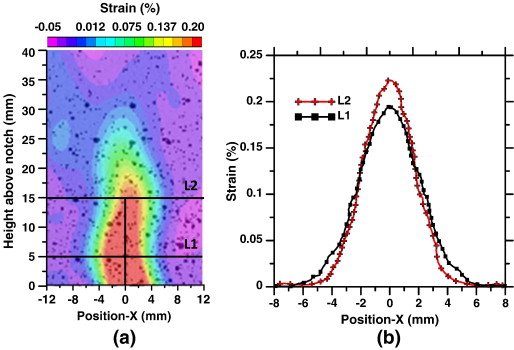Citation
Das, S.; Aguayo, M.; Sant, G.; Mobasher, B.; Neithalath, N. Cement and Concrete Research 2015, 73, 51-62.
Das, S.; Aguayo, M.; Sant, G.; Mobasher, B.; Neithalath, N. Cement and Concrete Research 2015, 73, 51-62.
Higher volumes of limestone can be used as OPC replacement by exploiting its increased reactivity in the presence of aluminous sources, thereby ensuring property-equivalence or improvements (e.g., strength, ionic transport). To examine the improvements in matrix fracture response in blended binder systems, this study characterizes and quantifies the flexural fracture process zone (FPZ) using digital image correlation. For the traditional OPC mortar, the localized strain intensity in the crack vicinity is the highest, FPZ initiates at a lower crack mouth opening displacement (CMOD), and its width is the lowest, while OPC–limestone–metakaolin blends show the lowest localized strain intensity, higher CMOD at FPZ initiation, and the highest FPZ width. The ultimate tensile strain and tensile toughness, extracted via inverse analysis, are found to be the highest for the ternary blends. The tensile modulus and the area under the softening region of the tensile constitutive relationship correlate well to the FPZ parameters.
